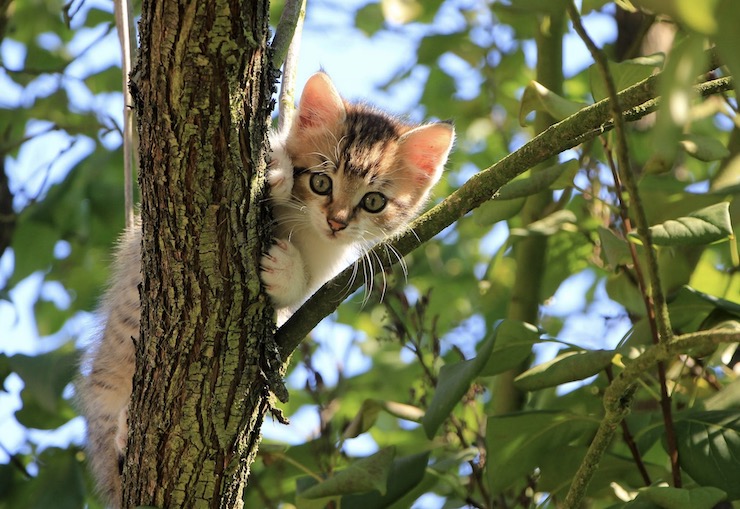
When a cat found itself stuck on top of a tall electricity pole in an El Paso, TX neighborhood recently, local residents decided to call the local fire department and an animal rescue group for help. But it turned out that neither agency could coax the cat down to safety. Several days passed but the cat wouldn’t budge. So the desperate neighbors struck upon an ingenious plan: Attach a laundry basket to a drone and send the aircraft buzzing nearby, hoping the cat would see the merits of jumping in. When it did, and the cat was brought down to safety, neighbors cheered and congratulated themselves on a job well done.
It turns out that animal rescues via drones are becoming increasingly common. That’s because at least two organizations are now explicitly dedicated to this mission. In fact, one of those organizations, Drone SAR for Lost Dogs UK, just received an award from the British House of Lords for its steadfast efforts. Its founder Graham Burton says the group has already rescued and reunited more than 2,750 dogs with their owners. He told BBC News last week that reuniting owners with their pets was “the best feeling ever.”
Another champion animal rescuer is Douglas Thron, who first got into the business during an overseas trip with his drone in the Bahamas. While helping international relief agencies film the aftermath of a natural disaster, Thron noticed dozens of lost and missing dogs, some of them injured, wandering around hungry in search of food and shelter. He decided to put a high-powered scope on one of his drones and within minutes found one dog searching through a huge pile of debris for food. He’s been conducting animal rescues ever since.
Burton’s organization comprises a volunteer network of more than 3,000 drone pilots and more than 2,500 ground searchers across the UK and Ireland. The group already enjoys more than 64,000 followers. Pet owners regularly contact the group via Facebook or email and ask for support. Burton’s team identifies drone operators and ground searchers active in the caller’s area and puts them in contact with each other.
“You can cover areas where people can’t walk, cliff faces, or large areas of fields that would normally take hours to search by foot. It can all be done in 20 minutes or half an hour using a drone,” he told BBC News.
Thron for the most part operates alone but typically, he also recruits local collaborators in the disaster zones he visits. Like Burton, he’s gained considerable fame and acclaim for his work. He regularly conducts animal rescue operations after seasonal wildfires in Oregon and northern California but likes to make himself available for overseas operations where local drone resources may be scarce. In 2020 Thron helped rescue hundreds of endangered koalas after raging wildfires unexpectedly ravaged parts of western Australia. Currently, he’s helping local civic groups search for thousands of animals displaced by the devastating war in Ukraine.
Thron says his favorite drone is the DJI Matrice 210 RTK, which he equips with an infrared camera to detect animal heat signatures and a high-powered Zenmuse Z30 lens (with a magnification of 180X) for visual verification. It’s amazing, he says, what one person, equipped with a simple drone, can do to “make a real difference in the lives of animals that would otherwise needlessly suffer and perish.”
Thron says he first began rescuing animals as a young teenager but never imagined making a career of it. Eventually, he hopes to establish a “SAR ranch” where he can train others to conduct their own drone animal rescue missions. Recently, he began hosting his own TV show “Doug to the Rescue” (on CuriosityStream) which documents his ongoing work and encourages other diehard animal lovers to follow in his footsteps. “Hopefully, drones can become as popular for rescuing animals as helicopters are for rescuing people after a disaster,” he says.
If last week’s rescue in El Paso is any indication, they already are.
|